- Home
- Connie Willis
Remake Page 2
Remake Read online
Page 2
I grabbed a paper cup from a Marilyn swaying past and downed the capsules.
“So, Hedda,” I said, since talking to her was better than to the baseball cap or the time-travel exec, “what other gossip you putting in your column this week?”
“Column?” she said, looking blank. “You always call me Hedda. Why? Is she a movie star?”
“Gossip columnist,” I said. “Knew everything that was going on in Hollywood. Like you. So what is? Going on?”
“Viamount’s got a new automatic foley program,” she said promptly. “ILMGM’s getting ready to file copyrights on Fred Astaire and Sean Connery, who finally died. And the word is Pinewood’s hiring warmbodies for the new Batman sequel. And Warner’s—” She stopped in midword and frowned down at her hand.
“What’s the matter?”
“I don’t think it’s chooch. I’m getting a funny …” She peered at her hand. “Maybe the yellow ones were the chooch.” She fished through her hand. “This feels more like ice.”
“Who gave them to you?” I said. “The Disney guy?”
“No. This guy I know. A face.”
“What does he look like?” I asked. Stupid question. There are only two varieties: James Dean and River Phoenix. “Is he here?”
She shook her head. “He gave them to me because he was leaving. He said he wouldn’t need them anymore, and besides, he’d get arrested in China for having them.”
“China?”
“He said they’ve got a liveaction studio there, and they’re hiring stunt doubles and warmbodies for their propaganda films.”
And I’d thought doing paste-ups for Mayer was the worst job in the world.
“Maybe it’s redline,” she said, poking at the capsules. “I hope not. Redline always makes me look like shit the next day.”
“Instead of like Marilyn Monroe,” I said, looking around the room for Mayer. He still wasn’t back. The time-travel exec was edging toward the door with a Marilyn. The data-helmet geekates were laughing and snatching at air, obviously at a much better party than this one. Fred and Ginge were demonstrating another editing program. Rapid-fire cuts of Ginger, the ballroom curtains, Ginger’s mouth, the curtains. It must be the shower scene from Psycho.
The program ended and Fred reached for Ginger’s outstretched hand, her black-edged skirt flaring with momentum, and spun her into his arms. The edges of the freescreen started going to soft-focus. I looked over at the stairs. They were blurring, too.
“Shit, this isn’t redline,” I said. “It’s klieg.”
“It is?” she said, sniffing at it.
It is, I thought disgustedly, and what was I supposed to do now? Flashing on klieg wasn’t any way to do a meeting with a sleaze like Mayer, and the damned stuff isn’t good for anything else. No rush, no halluces, not even a buzz. Just blurred vision and then a flash of indelible reality. “Shit,” I said again.
“If it is klieg,” Hedda said, stirring it around with her gloved finger, “we can at least have some great sex.”
“I don’t need klieg for that,” I said, but I started looking around the room for somebody to pop. Hedda was right. Flashing during sex made for an unforgettable orgasm. Literally. I scanned the Marilyns. I could do the exec’s casting couch number on one of the freshies, but there was no way to tell how long that would take, and it felt like I only had a few minutes. The Marilyn I’d talked to before was over by the freescreen listening to the studio exec’s time-travel spiel.
I looked over at the door. A girl was standing in the doorway, gazing tentatively around at the party as if she were looking for somebody. She had curly light brown hair, pulled back at the sides. The doorway behind her was dark, but there had to be light coming from somewhere because her hair shone like it was backlit.
“Of all the gin joints in all the world …” I said.
“Joint?” Hedda said, deep in her pill assortment. “I thought you said it was klieg.” She sniffed it.
The girl had to be a face, she was too pretty not to be, but the hair was wrong, and so was the costume, which wasn’t a halter dress and wasn’t white. It was black, with a green fitted weskit, and she was wearing short green gloves. Deanna Durbin? No, the hair was the wrong color. And it was tied back with a green hair ribbon. Shirley Temple?
“Who’s that?” I muttered.
“Who?” Hedda licked her gloved finger and rubbed it in the powder the pills had left on her glove.
“The face over there,” I said, pointing. She had moved out of the doorway, over against the wall, but her hair was still catching the light, making a halo of her light brown hair.
Hedda sucked the powder off her glove. “Alice,” she said.
Alice who? Alice Faye? No, Alice Faye’d been a platinum blonde, like everybody else in Hollywood. And she wasn’t given to hair ribbons. Charlotte Henry in Alice in Wonderland?
Whoever the girl had been looking for—the White Rabbit, probably—she’d given up on finding him, and was watching the freescreen. On it, Fred and Ginger were dancing around each other without touching, their eyes locked.
“Alice who?” I said.
Hedda was frowning at her finger. “Huh?”
“Who’s she supposed to be?” I said. “Alice Faye? Alice Adams? Alice Doesn’t Live Here Anymore?”
The girl had moved away from the wall, her eyes still on the screen, and was heading toward the baseball cap. He leaped forward, thrilled to have a new audience, and started into his spiel, but she wasn’t listening to him. She was watching Fred and Ginge, her head tilted up toward the screen, her hair catching the light from the fibe-op feed.
“I don’t think any of this stuff is what he told me,” Hedda said, licking her finger again. “It’s her name.”
“What?”
“Alice,” she said. “A-l-i-s. It’s her name. She’s a freshie. Film hist major. From Illinois.”
Well, that explained the hair ribbon, though not the rest of the getup. It wasn’t Alice Adams. The gloves were 1950s, not thirties, and her face wasn’t angular enough to be trying for Katharine Hepburn. “Who’s she supposed to be?”
“I wonder which one of these is ice,” Hedda said, poking around in her hand again. “It’s supposed to make the flash go away faster. She wants to dance in the movies.”
“I think you’ve had enough pill potluck,” I said, reaching for her hand.
She squeezed it shut, protecting the pills. “No, really. She’s a dancer.”
I looked at her, wondering how many unmarked pills she’d taken before I got here.
“She was born the year Fred Astaire died,” she said, gesturing with her closed fist. “She saw him on the fibe-op feed and decided to come to Hollywood to dance in the movies.”
“What movies?” I said.
She shrugged, intent on her hand again.
I looked over at the girl. She was still watching the screen, her face intent. “Ruby Keeler,” I said.
“Huh?” Hedda said.
“The plucky little dancer in 42nd Street who wants to be a star.” Only she was about twenty years too late. But just in time for a little popsy, and if she was wide-eyed enough to believe she could make it in the movies, it ought to be a piece of cake getting her up to my room.
I shouldn’t have to explain time travel to her, like the exec. He was talking earnestly to a Marilyn wearing black fringe and holding a ukelele. Some Like It Hot.
“See, you’re turning me down in this timefeed,” he was saying, “but in a parallel timefeed we’re already popping.” He leaned closer. “There are hundreds of thousands of parallel timefeeds. Who knows what we’re doing in some of them?”
“What if I’m turning you down in all of them?” the Marilyn said.
I squeezed past her fringe, thinking she might work out if Ruby didn’t, and started through the crowd toward the screen.
“Don’t!” Hedda said loudly.
At least half the room turned to look at her.
“Don’t what?”
I said, coming back to her. She was looking past me at Alis, and her face had the bleak, slightly dazed look klieg produces.
“You just flashed, didn’t you?” I said. “I told you it was klieg. And that means I’ll be doing the same thing shortly, so if you’ll excuse me—”
She took hold of my arm. “I don’t think you should—” she said, still looking at Alis. “She won’t…” She was looking worriedly at me. Mildred Natwick in She Wore a Yellow Ribbon, telling John Wayne to be careful.
“Won’t what? Give me a pop? You wanta bet?”
“No,” she said, shaking her head like she was trying to clear it. “You … she knows what she wants.”
“So do I. And thanks to your Russian-roulette approach to pharmaceuticals, it promises to be an unforgettable experience. If I can get Ruby up to my room in the next ten minutes. Now, if there are no further objections …” I said, and started past her.
She started to put out her hand, like she was going to grab my sleeve, and then let it drop.
The exec was talking about negative-matter regions. I went around him and over to the screen, where Alis was looking up at Fred’s face, the staircase, Ginger’s black-edged skirt, Fred’s hand.
She was as pretty in close-up as she had been in the establishing shot. Her caught-back hair was picking up the flickering light from the screen and her face had an intent, focused look.
“They shouldn’t do that,” she said.
“What? Show a movie?” I said. “‘You’ve got to show a movie at a party. It’s a Hollywood law.’”
She turned and smiled delightedly at me. “I know that line. It’s from Singin’ in the Rain,” she said, pleased. “I didn’t mean the movie. It’s them editing it like that.” She looked back up at the screen. Or down. It was doing an aerial now, and all you could see were the tops of Fred and Ginger’s heads.
“I take it you don’t like Vincent’s edit program?” I said.
“Vincent?”
I nodded toward the baseball cap, who was off in a corner doing a line of illy. “Doesn’t he remind you of Vincent Price in House of Wax?”
The edit program was back to quick cuts—the steps, Fred’s face, close-up of a step. The baby carriage scene from Potemkin.
“In more ways than one,” I said.
“Fred Astaire always insisted they shoot his dances in full-length shot and a continuous take,” she said without taking her eyes off the screen. “He said it’s the only way to film dancing.”
“He did, huh? No wonder I like the original better.” I looked at her. “I’ve got it up in my room.”
And that made her turn away from Ginger’s flashingly cut feet, shoulder, hair, and look at me. It was the same intent, focused look she had had watching the screen, and I felt the edges start to blur.
“No cuts, no camera angles,” I said rapidly. “Nothing preprogrammed. Full-length and continuous take. Want to come up and take a look?”
She looked back at the freescreen. Fred’s chest, his face, his knees. “Yes,” she said. “You’ve got the real movie? Not colorized or anything?”
“The real thing,” I said, and led her up the stairs.
RUBY KEELER: [Nervously] I’ve never been in a man’s apartment before.
ADOLPHE MENJOU: [Pouring champagne] You’ve never been in Hollywood before. [Handing her glass] Here, my dear, this will relax you.
RUBY KEELER: [Hovering near door] You said you had a screen test application up here. Shouldn’t I fill it out?
ADOLPHE MENJOU: [Turning down lights] Later, my dear, after we’ve had a chance to get to know each other.
I’ve got anything you could want,” I told Alis on the way up. “All the ILMGM’s and the Warner and Fox-Mitsubishi libraries, at least everything that’s been digitized, which should be everything you’d want.” I led her down the hall. “The Fred Astaire-Ginger Rogers movies were Warner, weren’t they?”
“RKO,” she said.
“Same thing.” I keyed the door. “Here we are,” I said, and opened it into my room.
She took a trusting step inside and then stopped at the sight of the arrays covering three walls with their mirrored screens. “I thought you said you were a student,” she said.
Now was not the time to tell her I hadn’t been to class in over a semester. “I am,” I said, leaning past her so she’d step forward into the room and picking up a shirt. “Clothes all over the floor, bed’s not made.” I lobbed the shirt into the corner. “Andy Hardy Goes to College”
She was looking at the digitizer and the fibe-op feed hookup. “I thought only the studios had Crays.”
“I do work for them to help pay for tuition,” I said. And keep me in chooch.
“What kind of work?” she said, looking up at her own faces reflection in the silvered screens, and now was not the time to tell her I specialized in procuring popsy for studio execs either.
“Remakes,” I said. I smoothed out the blankets. “Sit down.”
She perched on the edge of the bed, knees together.
“Okay,” I said, sitting down at the comp. I asked for the Warner library menu. “The Continental’s in Top Hat, isn’t it?”
“The Gay Divorcée,” she said. “Near the end.”
“Main screen, end frame and back at 96,” I said. Fred and Ginge leaped onto the screen and up over a table. “Rew at 96 frames per sec,” and they jumped down off the table and back through breakfast to the ballroom.
I rew’d to the beginning of the number and let it go. “Do you want sound?” I said.
She shook her head, her face already intent on the screen, and maybe this hadn’t been such a great idea. She leaned forward, and the same concentrated look she’d had downstairs came into her face, as if she were trying to memorize the steps. I might as well not have been in the room, which hadn’t exactly been the idea in bringing her up here.
“Menu,” I said. “Fred Astaire and Ginger Rogers movies.” The menu came up. “Aux screen one, Swingtime” I said. There was usually a big dance finale in these things, wasn’t there? “End frame and back at 96.”
There was. On the top left-hand screen, Fred in tails spun Ginge in a silver dress. “Frame 102-044,” I said, reading the code at the bottom. “Forward realtime to end and repeat. Continuous loop. Screen two, Follow the Fleet, screen three, Top Hat, screen four, Carefree. End frame and back at 96.”
I started continuous loops on them and went through the rest of the Fred and Ginger list, filling most of the left-hand array with their dancing: turning, tapping, twirling, Fred in tails, sailor’s uniform, riding tweeds, Ginger in long, slinky dresses that flared out below the knee in a froth of feathers and fur and gutter. Waltzing, tapping, gliding through the Carioca, the Yam, the Piccolino. And all of them full-length. All of them without cuts.
Alis was staring at the screens. The careful, intent look was gone, and she was smiling delightedly.
“Anything else?”
“Shall We Dance,” she said. “The title number. Frame 87-1309.”
I set it running on the bottom row. Fred in meticulous tails, dancing with a chorus of blondes in black satin and veils. They all held up masks of Ginger Rogers’s face, and they put them up in front of their faces and flirted away from Fred, their masks as stiff as faces.
“Any other movies?” I said, calling up the menu again. “Plenty of screens left. How about An American in Paris?”
“I don’t like Gene Kelly,” she said.
“Okay,” I said, surprised. “How about Meet Me in St. Louis?”
“There isn’t any dancing in it except the ‘Under the Banyan Tree’ number with Margaret O’Brien. It’s because of Judy Garland. She was a terrible dancer.”
“Okay,” I said, even more surprised. “Singin’ in the Rain? No, wait, you don’t like Gene Kelly.”
“The ‘Good Mornin’’ number’s okay.”
I found it, Gene Kelly with Debbie Reynolds and Donald O’Connor, tapping up steps and over furniture in wild
exuberance. Okay.
I scanned the menu for movies that didn’t have Gene Kelly or Judy Garland in them. “Good News?”
“‘The Varsity Drag,’” she said, nodding. “It’s right at the end. Do you have Seven Brides for Seven Brothers?”
“Sure. Which number?”
“The barnraising,” she said. “Frame 27-986.”
I called it up. I looked for something with Ruby Keeler in it. “42nd Street?”
She shook her head. “It’s a Busby Berkeley. There’s no dancing in it except for one background shot of a rehearsal and about sixteen bars in the ‘Pettin’ in the Park’ number. There’s never any dancing in Busby Berkeleys. Do you have On the Town?”
“I thought you didn’t like Gene Kelly.”
“Ann Miller,” she said. “The ‘Prehistoric Man’ number. Frame 28-650. She’s technically pretty good when she sticks to tap.”
I don’t know why I was so surprised or what I’d expected. Starstruck adoration, I guess. Ruby Keeler gushing, “Gosh, Mr. Ziegfeld, a part in your show! That’d be wonderful!” Or maybe Judy Garland, gazing longingly at the photo of Clark Gable in Broadway Melody of 1938. But she didn’t like Judy, and she’d dismissed Gene Kelly as airily as if he was an auditioning chorus girl in a Busby Berkeley. Who she didn’t like either.
I filled out the array with Fred Astaire, who she did like, though none of his color movies were as good as the b-and-w’s, and neither were his partners. Most of them just hung on while he swung them around, or struck a pose and let him dance circles, literally, around them.
Alis wasn’t watching them. She’d gone back to the center screen and was watching Fred, full-length, swirling Ginger weightlessly across the floor.
“So that’s what you want to do,” I said, pointing. “Dance the Continental?”
She shook her head. “I’m not good enough yet. I only know a few routines. I could do that,” she said, pointing at the Varsity Drag, and then at the cowboy number from Girl Crazy. “And maybe that. Chorus, not lead.”
And that wasn’t what I expected either. The one thing the faces have in common under their Marilyn beauty marks is the unshakeable belief they’ve got what it takes to be a star. Most of them don’t—they can’t act or show emotion, can’t even do a reasonable imitation of Norma Jean’s breathy voice and sexy vulnerability—but they all think the only thing standing between them and stardom is bad luck, not talent. I’d never heard any of them say, “I’m not good enough.”

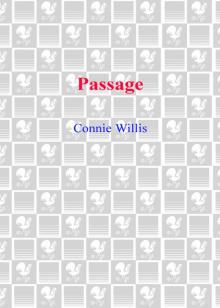 Passage
Passage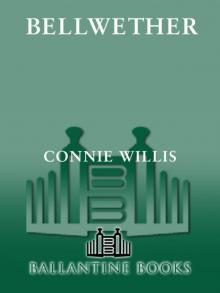 Bellwether
Bellwether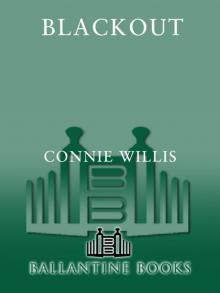 Blackout
Blackout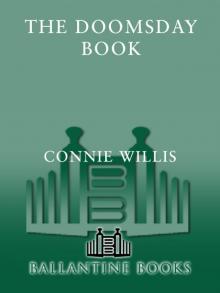 Doomsday Book
Doomsday Book A Lot Like Christmas: Stories
A Lot Like Christmas: Stories Water Witch
Water Witch To Say Nothing of the Dog
To Say Nothing of the Dog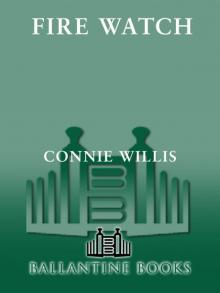 Fire Watch
Fire Watch The Winds of Marble Arch and Other Stories
The Winds of Marble Arch and Other Stories Uncharted Territory
Uncharted Territory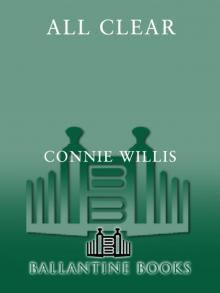 All Clear
All Clear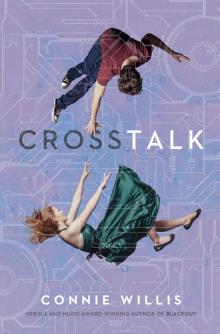 Crosstalk
Crosstalk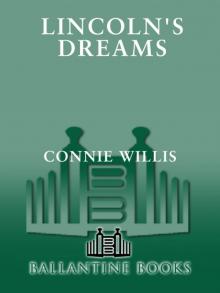 Lincoln's Dreams
Lincoln's Dreams Miracle and Other Christmas Stories
Miracle and Other Christmas Stories Time is the Fire
Time is the Fire Blackout ac-1
Blackout ac-1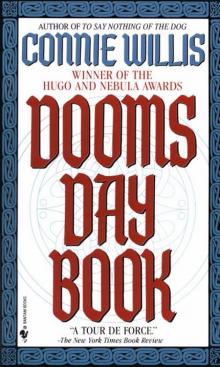 Dooms Day Book
Dooms Day Book Jack
Jack The Doomsday Book
The Doomsday Book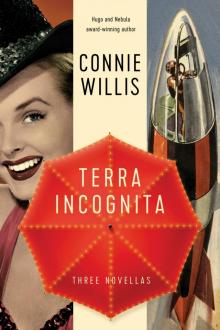 Terra Incognita
Terra Incognita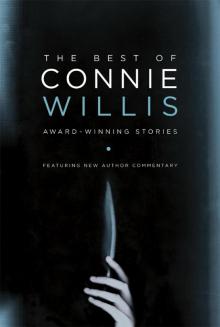 The Best of Connie Willis
The Best of Connie Willis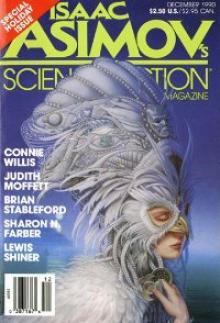 Cibola
Cibola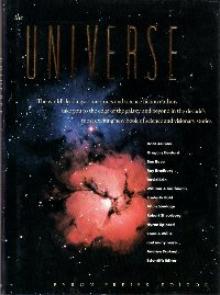 Schwarzschild Radius
Schwarzschild Radius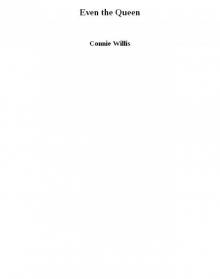 Even the Queen
Even the Queen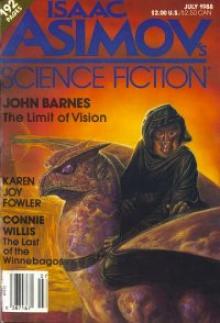 The Last of the Winnebagos
The Last of the Winnebagos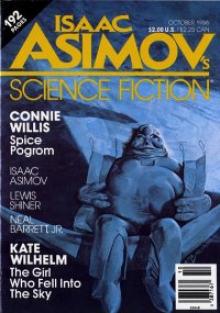 Spice Pogrom
Spice Pogrom Oxford Time Travel 1 - Blackout
Oxford Time Travel 1 - Blackout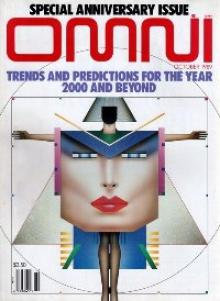 At The Rialto
At The Rialto A Lot Like Christmas
A Lot Like Christmas